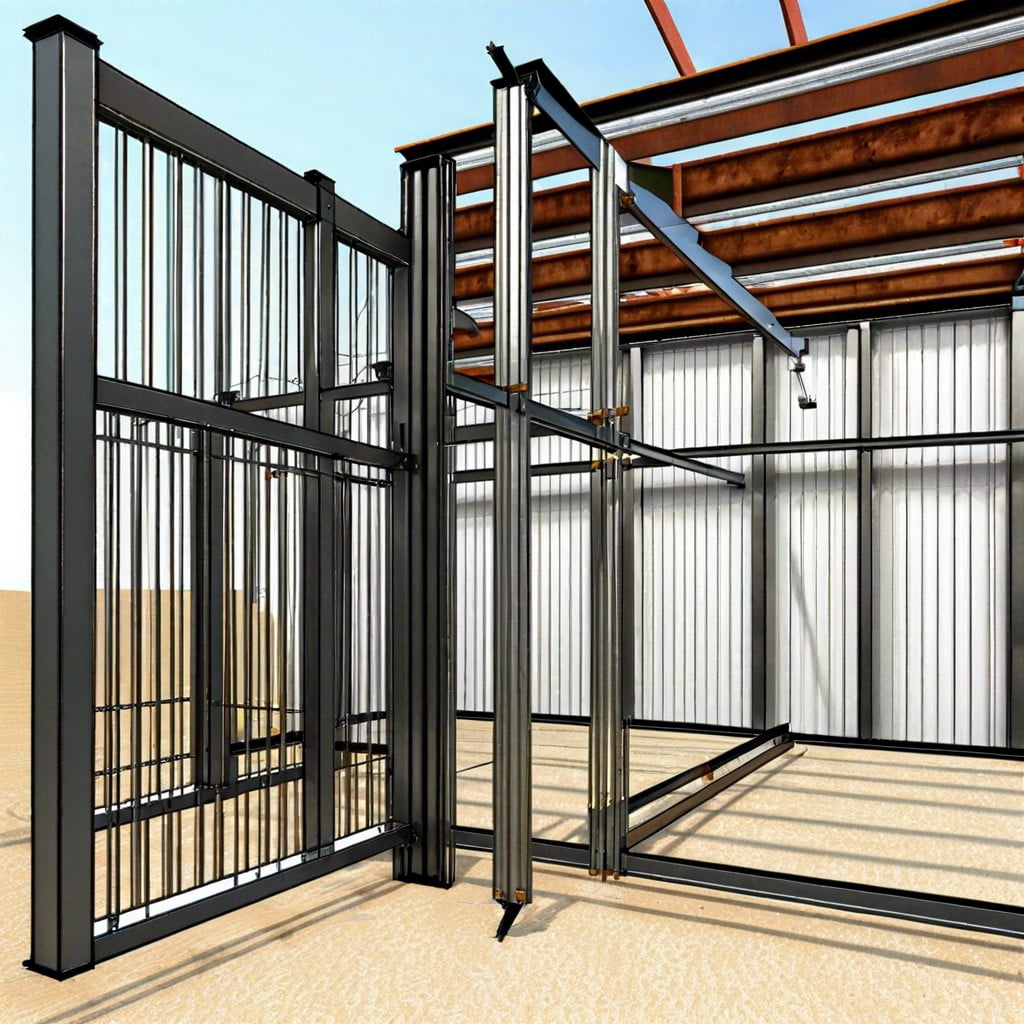Polymers offer several environmental benefits when used in construction, such as reduced energy consumption during production and extended product lifespans, which help reduce waste.
Polymers are often more lightweight than traditional materials, meaning less energy is required for transportation. These are generally recyclable and can be used in place of non-renewable resources like timber or steel.
Polymer materials have become increasingly popular in the construction industry due to their numerous environmental benefits.
From reducing energy consumption and waste to increasing durability and strength, polymers offer a range of advantages that can help reduce our environmental impact.
We’ll explore some of the key environmental benefits of using polymers in construction.
Key takeaways:
- Polymers reduce energy consumption during construction.
- Polymers are lightweight and recyclable, reducing waste and resource usage.
- Polymers contribute to eco-friendly building certifications.
- Polymers improve indoor air quality and resist mold growth.
- Polymers are used in renewable energy systems like solar panels.
Eco-friendly Construction

Construction requires using materials such as wood, steel, and concrete. Polymers are increasingly used in construction due to their many advantages over traditional materials.
Polymers are synthetic materials made from long chains of molecules that can be manipulated to create different properties for specific applications. They are lightweight yet strong and durable, making them ideal for construction projects where weight is essential.
Polymers also have excellent insulation properties, which help reduce energy costs associated with heating or cooling a structure.
Polymers can be easily molded into any shape, making them suitable for complex designs that would otherwise be difficult to achieve with traditional materials like wood or steel.
Polymers are often more cost-effective than traditional building materials since they require less labor and fewer resources during production and installation.
Overall, using polymers in construction offers numerous environmental benefits compared to traditional building materials due to their lightweight nature, strength and durability characteristics, and ability to insulate against heat loss/gain while reducing labor costs and resources needed during production/installation.
Impact on the Environment
Using polymers in construction can have a positive impact on the environment. Polymers are materials made from long chains of molecules, and they are often used as an alternative to traditional building materials such as wood, metal, and concrete.
Polymers are lightweight and durable, making them ideal for construction projects. They also require less energy to produce than other materials, which helps reduce greenhouse gas emissions associated with production processes.
Polymers can be recycled or reused more quickly than other building materials, helping to reduce waste and conserve resources.
Some polymers contain additives that make them resistant to fire or water damage; buildings constructed with these polymers may require less maintenance over time compared to those built with traditional materials.
Eco Building Materials
Polymer materials are becoming increasingly popular in construction due to their environmental benefits. Polymer materials are made from synthetic or natural substances combined to form a robust and durable material.
These materials can be used for various applications, including insulation, roofing, siding, and flooring. The main environmental benefit of using polymer materials is that they require less energy to produce than traditional building materials such as wood or concrete.
This means fewer resources are needed to create them; therefore, less pollution is created during production. Polymers tend to last longer than other building materials, which reduces the need for frequent replacement and thus further reduces the amount of energy required for production.
Another environmental benefit of using polymer in construction is its ability to reduce waste by being recyclable or reusable in some cases.
For example, certain types of plastic can be melted down and reused multiple times without losing strength or durability, which helps reduce the amount of waste produced during construction projects.
Overall, using polymer in construction has many environmental benefits due to its low energy requirements during production and its ability to be recycled or reused multiple times without losing any strength or durability.
Pollution Reduction
Using polymers in construction can have a positive environmental impact by reducing pollution. Polymers are materials made up of long chains of molecules, and they can be used to replace traditional building materials such as wood, metal, and concrete.
Using polymers instead of these other materials reduces the energy needed to produce them significantly. This means that fewer pollutants are released into the atmosphere during production.
Because polymers are lightweight and durable, they require less energy for transportation than heavier materials like concrete or steel. This further reduces emissions from vehicles transporting the material to its destination.
Since polymer-based products last longer than their traditional counterparts due to their durability and resistance to weathering and corrosion, there is less need for replacement over time which also helps reduce pollution levels in the environment.
Lifecycle Analysis of Polymer-Based Construction Materials
When it comes to evaluating the environmental impact of construction materials, a lifecycle analysis is crucial. This analysis takes into account all stages of a material’s life, from raw material extraction and manufacturing to transportation, installation, use, and eventual disposal or recycling.
Polymers used in construction have shown promising results in terms of their environmental performance throughout their lifecycle. Compared to traditional materials like concrete or steel, polymers often require less energy during production and generate fewer greenhouse gas emissions.
Polymer-based construction materials can be designed for durability and longevity. This means that they may require less frequent replacement or maintenance compared to other options.
By reducing the need for repairs or replacements over time, polymers contribute further towards sustainability by minimizing waste generation.
Furthermore, many polymer-based products are recyclable at the end of their useful life. Recycling these materials not only reduces landfill waste but also conserves resources by allowing them to be reused in new applications.
Lifecycle analyses consistently demonstrate that using polymers in construction can lead to significant reductions in energy consumption, carbon emissions, and waste generation.
Minimizing Waste Through Polymer Innovations
Traditional construction materials often generate a substantial amount of waste during manufacturing, installation, and demolition processes. However, polymers offer opportunities for reducing this waste by employing efficient production techniques and recycling methods.
Polymer-based construction materials can be manufactured with precision to minimize excess material usage. Unlike traditional building materials like concrete or steel that may require cutting or shaping on-site, polymer products are typically prefabricated off-site according to precise specifications.
This reduces the need for excessive trimming or adjustments during installation and helps eliminate unnecessary wastage.
Many polymer-based products used in construction can be recycled at the end of their lifespan instead of being discarded as non-recyclable waste. For example, certain types of plastic roofing tiles made from recycled polymers can themselves be recycled into new tiles once they reach the end-of-life stage.
Furthermore, advancements in technology have led to innovations such as 3D printing with polymers in construction projects. This technique allows for precise layer-by-layer deposition without generating any significant amount of leftover material since only what is required is used during printing.
Role of Polymers in Green Building Certifications
Polymers have emerged as key contributors to achieving these certifications due to their numerous environmental benefits. The use of polymer-based materials can help builders meet the stringent criteria set by green building certification programs such as LEED (Leadership in Energy and Environmental Design) or BREEAM (Building Research Establishment Environmental Assessment Method).
These certifications consider factors like energy efficiency, water conservation, waste reduction, and indoor air quality. By incorporating polymers into construction projects, builders can enhance their chances of obtaining these prestigious green building certifications while also reducing the overall environmental impact of their structures.
Polymers offer several advantages that align with the requirements for green building certification programs. For instance, polymer-based insulation materials provide excellent thermal performance and reduce energy consumption for heating or cooling buildings.
Using polymers in roofing systems can improve solar reflectance properties and decrease heat island effects.
Furthermore, many polymers used in construction are recyclable or made from recycled content themselves – an essential aspect considered by green building certification programs when evaluating material choices. Using recycled polymers not only reduces waste but also conserves natural resources compared to traditional non-recyclable alternatives.
Moreover, some polymer composites possess superior durability characteristics compared to conventional materials like wood or metal which may require frequent maintenance or replacement over time due to weathering effects such as rotting or corrosion. This longevity factor contributes positively towards meeting sustainability goals outlined by various green building standards.
Health Benefits of Using Polymers in Construction
One of the key health benefits is improved indoor air quality. Traditional construction materials, such as wood and concrete, can release harmful volatile organic compounds (VOCs) into the air over time.
These VOCs can contribute to various respiratory issues and allergies.
Polymers, on the other hand, have low or no VOC emissions due to their chemical composition and manufacturing processes. This means that buildings constructed with polymer-based materials have cleaner indoor air quality, promoting a healthier living environment for occupants.
Polymers are resistant to mold growth and moisture damage when properly installed and maintained. Mold growth in buildings can lead to serious health problems like allergic reactions or respiratory infections.
By using polymer-based materials that resist moisture absorption and inhibit mold growth, we can create safer spaces for people to live or work in.
Furthermore, some polymers used in construction possess antimicrobial properties which help prevent the spread of bacteria on surfaces commonly touched by multiple individuals like door handles or countertops. This feature becomes particularly important during times when hygiene is crucially emphasized.
Polymers and Renewable Energy in Construction
One notable application is in solar panels, where polymers are used as protective coatings and encapsulants for photovoltaic cells. These polymer-based materials not only enhance the durability and performance of solar panels but also contribute to their overall efficiency.
Polymers are utilized in wind turbine blades to improve their strength, flexibility, and resistance to environmental factors such as UV radiation and moisture. By incorporating advanced polymer composites into these blades, engineers can design longer-lasting turbines that generate more electricity from wind power.
Furthermore, polymers have found applications in geothermal energy systems by providing effective insulation for underground pipes carrying hot water or steam. The use of high-performance polymer materials helps minimize heat loss during transportation while ensuring long-term reliability under extreme temperature conditions.
By leveraging the unique properties of polymers within renewable energy infrastructure projects like solar panels, wind turbines, and geothermal systems; construction industry professionals can contribute significantly towards sustainable development goals by reducing greenhouse gas emissions associated with traditional fossil fuel-based power generation methods.
FAQ
What are the advantages of polymers to the environment?
Polymers are beneficial to the environment because their production requires less energy compared to metals and they degrade quickly, requiring less material for an equivalent output.
What are the advantages of polymers in construction industry?
The advantages of using polymers in the construction industry include their higher resistance to chemicals, the elimination of post-treatment finishing, and their light weight, being up to ten times lighter than typical metals.
How does polymers affect the environment?
Synthetic polymers, primarily non-biodegradable, pose environmental threats by accumulating as permanent waste and, when incinerated, emitting harmful gases that contribute to air pollution.
Is polymer plastic good for the environment?
Polymer plastic is generally not good for the environment as it contributes to pollution and can harm marine ecosystems and organisms.
What are the steps in recycling polymers in construction industries?
The steps in recycling polymers in construction industries involve collecting waste polymers, sorting and cleaning them, breaking them down either mechanically or chemically, and finally processing the recyclable material into new products or as aggregate in concrete or asphalt.
How do polymers enhance the durability of construction materials?
Polymers enhance the durability of construction materials by adding resistance to environmental factors, increasing tensile strength, and reducing water absorption.
How has the use of polymers evolved in modern construction techniques?
The use of polymers in modern construction techniques has evolved to provide enhanced durability, thermal efficiency, and cost-effectiveness, manifesting in applications ranging from concrete repair and reinforcement, to insulation materials, to advanced sealants and adhesives.
Recap




